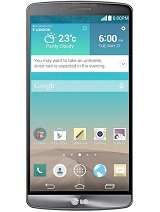GSMArena smartphone buyer's guide: July 2015
July 2015

€300-€400
This is where the midrange collides with the high-end and the lines get blurred. After that it's an all-out war between phones that offer countless variations on a common theme: great cameras, metal frames, waterproofing and stereo speakers (few manage to check all these boxes at the same time though).
Alcatel makes phones in every size segment, but the Hero 2 is the biggest. It has a 6" 1080p screen and a stylus, a 2GHz octa-core processor with 2GB of RAM ensuring smooth multitasking. The phone is a looker too, with thin bezels and a metal chassis.
It features a 13MP camera with optical stabilization and 1080p video capture, plus a 5MP selfie camera also capable of 1080p video recording. The Alcatel Hero 2 runs Android 4.4 KitKat and while it lacks the extensive multitasking add-ons of TouchWiz it can make a great budget alternative to the Galaxy Note.
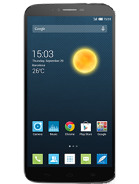
Alcatel Hero 2 |
Pros |
Cons |
|
|
||
| Review |
The LG G3 continues to skew the market being one of the cheapest phones with a QHD screen money can buy and its price is going down by the day. The thin bezels keep the size down, while the Snapdragon 801 chipset and 13MP OIS camera put extra pressure on 2014 flagships. The camera has "laser focus," which improves accuracy in low light.
Overall, the LG G3 is the phablet to buy if you want bang for the buck. The back is made out of quality plastic with a brushed metal finish and can be popped off to access the battery and microSD slot for extra flexibility.
The Samsung Galaxy Alpha is the result of Samsung trying to make a compact flagship. In a way it's a prototype of the Note 4, but at 6.7mm slim and 115g it still has a place on the market. The thin body also features a metal frame combined with faux perforated leather that is more premium than the Galaxy S5.
The Galaxy Alpha has either an Exynos 5 Octa or a Snapdragon 801 chipset. We tested the Exynos model, which offers great performance and managed to squeeze decent uptime out of the small 1,860mAh battery. The Home key is a fingerprint sensor, which enables PayPal transactions and Private mode, but it's the less-convenient swipe to scan kind.
Тhe Alpha's 12MP camera produces great stills and does 2160p videos.
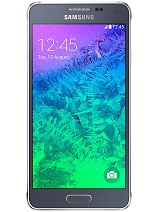
Samsung Galaxy Alpha |
Pros |
Cons |
|
|
|
|
| Review |
The Sony Xperia Z3 Compact will have an edge in a beauty contest with its sturdy plastic frame and glass back. It has a screen of almost the same size, 4.6" 720p, but the phone is smaller (if a bit thicker). True, it lacks the hardware Home key with a fingerprint sensor, but it makes up for it with stereo speakers on the front.
It's waterproof too, so it can go where the Alpha can't, plus Sony's 20.7MP camera promises higher resolution stills. While the quality doesn't quite live up to the megapixel count, the 2160p video is quite good.
The Xperia Z3 uses the same Snapdragon 801 chipset as one of the Alpha’s versions, but has stellar battery life. As part of the Z-series, the phone is already receiving the Android 5.0 Lollipop update.

Sony Xperia Z3 Compact |
Pros |
Cons |
|
|
||
| Review |
The Motorola Moto X (2014) is not as camera-obsessed as the phones above but it takes better care of its looks. With a metal frame and a selection of genuine wood and leather backs, the phone is highly customizable via the Moto Maker.
It has a large 5.2" AMOLED screen of 1080p resolution and is based on the Snapdragon 801 chipset. While not a cameraphone proper, the Moto Z does a good enough job with a 13MP unit that shoots 2160p video. You get stereo speakers on the front, plus some basic waterproofing - it will survive splashes, but not submersion. Without a microSD card slot though, the base 16GB version won't cut it.
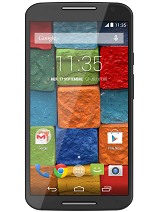
Motorola Moto X (2014) |
Pros |
Cons |
|
|
|
|
| Review |
The Asus Zenfone 2 ZE551ML deserves a spot bringing one of the most impressive flagship specs you'll see nowadays. It has a 5.5" IPS 1080p display and runs on a powerful Intel Atom chipset. You can opt for the quad-core 1.8GHz processor and 2GB RAM model or the more powerful version with a quad-core 2.3GHz CPU and 4 GB RAM. The rest of the specs including camera and connectivity are on par with the rest of the entries here - but regardless of the impressive horsepower, the Zenfone 2 can only do 1080p videos @30fps.
You can get a Lollipop-running Zenfone 2 with either 16, 32 or 64GB storage, expandable via a microSD slot.
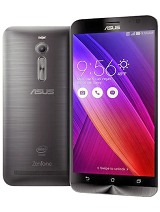
Asus Zenfone 2 ZE551ML |
Pros |
Cons |
|
|
|
|
| Review |
The metal Oppo R7 made quite an impression recently - it's one of the best looking devices on the market, with a beautiful 5" 1080p AMOLED screen, enough power courtesy of the Snapdragon 615 chip and an average 13MP snapper for its €350 price tag.
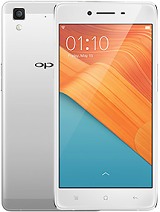
Oppo R7 |
Pros |
Cons |
|
|
|
|
| Review |
The Nokia Lumia 930 also has a 5" AMOLED screen and focuses on imaging and performance. The large 20MP sensor features PureView tech with optical stabilization and since the Denim update it records 2160p video.
The 5" 1080p AMOLED screen rivals Samsung's Super AMOLEDs and with ClearBlack tech it's clearly visible in the sun. It's the current Windows Phone flagship and will offer the premium W10 experience until Microsoft starts unleashing the new flagships.
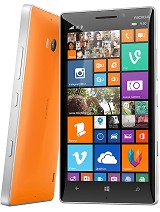
Nokia Lumia 930 |
Pros |
Cons |
|
|
|
|
| Review |
The camera shootout continues with the HTC Desire Eye, though this one is more interested in you than the scenery. It has a best-in-class 13MP selfie camera with its own dedicated LED flash. Most other phones in this category have just 2MP snappers. The main camera is a 13MP unit too, both record 1080p video.
The Desire Eye may not have a metal unibody like its One siblings - or the Xperia Z2 - but it does borrow their front-facing speakers and it’s IPX7 certified. It's powered by a Snapdragon 801 chipset with 2GB of RAM and is getting Android 5.0 Lollipop.
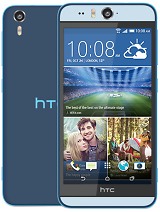
HTC Desire Eye |
Pros |
Cons |
|
|
||
| Review |
The Sony Xperia Z2 now costs as much as the Xperia Z3 Compact. It is seemingly a generation behind the Z3 Compact, but keep in mind' it's a Sony half-generation. It has a 5.2" IPS screen with 1080p resolution and stereo speakers and a metal frame. You don't get a choice of backs, just glass, but the Z2 has true waterproofing.
The camera is the Sony usual, a large 20.7MP sensor with 2160p video capture. The Xperia Z2 is powered by a Snapdragon 801 chipset with 3GB of RAM and will run Android 5.0 Lollipop in short order.
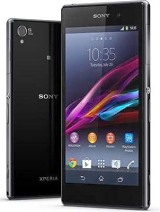
Sony Xperia Z2 |
Pros |
Cons |
|
|
||
| Review |
The Samsung Galaxy S5 rounds off the waterproof shooters for this chapter. It has IP67 certification and a 16MP camera with 2160p video capture that has several advantages over the Galaxy Alpha’s camera (including phase detection AF).
It has a 5.1" 1080p Super AMOLED screen similar to the Lumia 930 and Moto X (2014), as well as a similar Snapdragon 801 chipset. It has a swipe-to-scan fingerprint sensor like the Galaxy Alpha and unlike the Galaxy S6 you get a replaceable battery and a microSD card slot.

Samsung Galaxy S5 |
Pros |
Cons |
|
|
|
|
| Review |
Believe it or not, the LG G Flex 2 price has almost halved since we met it last quarter. It now costs about €390, which makes it our final suggestion in this chapter. It has a curved - a 5.5" P-OLED that makes the Flex2 more compact and manageable than its predecessor, higher resolution too - 1080p up from 720p.
It was the first device with a Snapdragon 810 chipset and launched with Android 5.0 Lollipop out of the box. It uses the rear button design of the LG G3, but the back has a special self-healing coating, which can heal away mild scratches in a matter of minutes.
The LG G Flex also borrows the 13MP camera with OIS, laser autofocus and 2160p video capture of the LG G3 too.
Basically, the LG G Flex 2 is a flagship of the current generation, one of the most powerful phones out there, and you can have it at a midrange price.

LG G Flex2 |
Pros |
Cons |
|
|
||
| Review |
Reader comments
- Great
- 15 Mar 2016
- rAV
I am using note 5 and iphone 6s and before it I hv used windows phone but they are of low category.. Samsung is the best but still my iphone 6s is the best in world..
- shantvid
- 17 Nov 2015
- YP6
I would like to see recent buyers guide. Would u help gsmarena?
- 6 God
- 07 Aug 2015
- THj
Besides the horrible WP app store..
